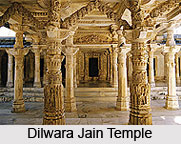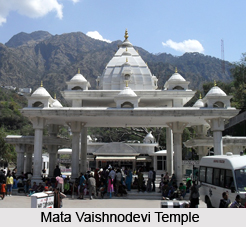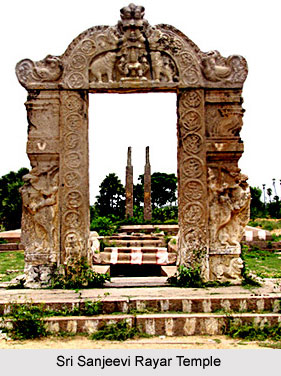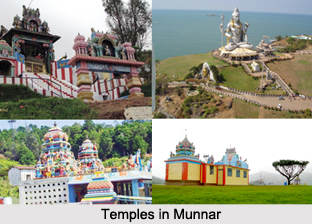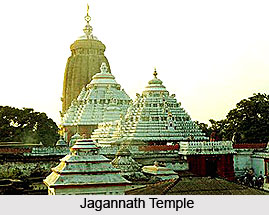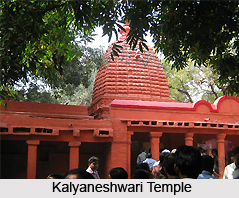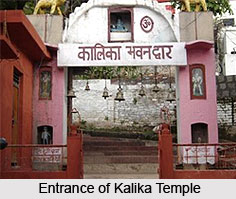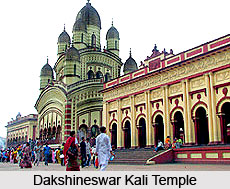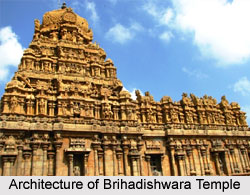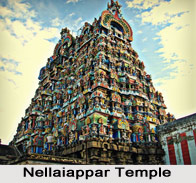 Nellaiappar Temple is one of the famous temples in Tamil Nadu steeped in tradition and history and also known for its musical pillars and other brilliant sculptural splendors. This temple is a shrine to Shiva and Parvati and covers 14 acres. Agastya worshiped Shiva in a bamboo grove and by Rama after killing Mareecha nine miles away. There is a shrine dedicated to Vishnu near the sanctum, supporting the belief that Nellai Govindan (Vishnu) visited Tirunelveli to officiate the marriage of Shiva and Kantimathi. Near Tirunelveli, there are nine Vaishnavite temples dedicated to Vishnu.
Nellaiappar Temple is one of the famous temples in Tamil Nadu steeped in tradition and history and also known for its musical pillars and other brilliant sculptural splendors. This temple is a shrine to Shiva and Parvati and covers 14 acres. Agastya worshiped Shiva in a bamboo grove and by Rama after killing Mareecha nine miles away. There is a shrine dedicated to Vishnu near the sanctum, supporting the belief that Nellai Govindan (Vishnu) visited Tirunelveli to officiate the marriage of Shiva and Kantimathi. Near Tirunelveli, there are nine Vaishnavite temples dedicated to Vishnu.
Antiquity of Nellaiappar Temple
The temple dates back to 700 AD. There were two distinct temples for Shiva and his consort and the Sangili Mandapam linking the two was built in the 17th century. The towers date back to the 17th century. There are many inscriptions dating back to 950 AD in the temple.
Legends of Nellaiappar Temple
The Nellaiappar Temple was known as Tinnevelly during the British colonial era. In ancient Puranic times, this region was referred to as Venuvana, signifying a forest abundant with bamboo. Within this bamboo forest, the presiding deity of the current temple is believed to have manifested.
One of the significant legends associated with this temple revolves around the divine union of Lord Shiva and Goddess Parvathi. It is said that Vishnu, another prominent deity in Hinduism, had the privilege of witnessing the celestial wedding of Shiva and Parvathi at this sacred site. Within the temple, there is an image of Vishnu holding a metallic vessel known as "Gindi," distinguished by its spout. This image serves as a visual representation of the mythological event where Vishnu bore witness to the sacred union between the divine couple, Shiva and Parvathi.
History of Nellaiappar Temple
The Nellaiappar Temple derives its name from the lush groves of a specific variety of tree or shrub that once dominated the region, sheltering the presiding deity. This region was referred to as Venuvanam due to the prevalence of Venu forests.
The temple`s origins trace back to different dynasties throughout its history. The original temple complex is believed to have been constructed by the Pandyas. However, the present masonry structure has seen additions and contributions from various ruling dynasties, including the Cholas, Pallavas, Cheras, and Madurai Nayaks. Notably, Nindraseer Nedumaran, also known as Koon Pandian, who ruled in the 7th century AD, played a pivotal role in the construction of the sanctums, gopurams, and the famed mani mandapam with its renowned musical pillar. In 1155, the flag stand near the Nandi was erected, adding to the temple`s architectural heritage. Subsequently, in the 13th century, Pandya ruler Kulasekara Pandyan I fortified the temple by constructing its outer wall.
Originally, the Nellaiappar and Kanthimathi temples stood as separate entities, with spaces in between. However, in 1647, Thiru Vadamalaiappa Pillaiyan, a devoted follower of Lord Siva, united the two temples by constructing the "Chain mandapam" (Sangili Mandapam). At the heart of the Flower Garden, one finds a square vasantha mandapam supported by 100 pillars. The Nandi mandapam, attributed to Sivanthiappa Nayakar in 1654, stands to the west of the chain mandapam. In 1756, Thiruvengadakrishna Mudaliar established the flower garden adjacent to the chain mandapam.
Numerous stone inscriptions within the temple complex provide valuable historical insights. Among them, the inscriptions dating back to the reign of Veerapandiyan, around 950 AD, hold significance. Additionally, inscriptions from the eras of Rajendran I and Kulothunga Chola I are noteworthy. The inscriptions from the time of Maravarman Sundara Pandyan refer to Lord Siva as "Woodayar" and "Wodeyanayanar," and the Goddess as "Nachiar." Kulasekkara Pandiyan`s inscriptions document his military victories over the Chera, Chola, and Hoysala kings, with the resulting spoils of war funding the construction of the temple`s outer walls. These inscriptions collectively provide a window into the rich historical tapestry of the Nellaiappar Temple.
Architecture of Nellaiappar Temple
The architectural grandeur of the Nellaiappar Temple reflects its historical and cultural significance. This sprawling temple complex spans on an expansive area of 14.5 acres, measuring 850 feet in length and 756 feet in width. It is enclosed by concentric rectangular walls and features an imposing Rajagopuram (towering entrance gate). One of the notable architectural elements of this temple is the Sangili Mandapam, which was constructed in 1647 by Thiru Vadamalaiappa Pillaiyan. This mandapam serves as a connecting link between the shrines of Ganthimathi Amman and Nellaiyappar.
Within the temple precincts, several shrines are dedicated to various deities. Among these, the shrines of Swamy Nellaiappar and his consort Sri Kanthimathi Ambal hold particular prominence. The Nandi mandapam features a sizable statue of Nandi, the sacred bull deity, resembling those found in Tanjore and Rameswaram. However, one of the temple`s distinctive features is the `Mani Mandapam,` situated near the Nandi mandapam. This unique structure boasts two colossal pillars carved from a single stone, each adorned with 48 sub-pillars. Striking these sub-pillars produces melodious musical notes, an architectural marvel admired by many. Tamil poets have described these pillars as a fusion of the Shruti Gana Laya types, further emphasizing their cultural significance.
Other noteworthy mandapams within the temple complex include the Oonjal Mandapam, used for ceremonial swings, and the opulent 1000-pillared hall, known for its intricate craftsmanship.
The composite columns portraying Virabhadra wielding a sword and horn are believed to be additions made by the Vijayanagara kings during the early 1500s. Similar Virabhadra columns can be found in several other temples, including the Adikesava Perumal Temple at Thiruvattaru, Meenakshi Temple at Madurai, Kasi Viswanatha Temple at Tenkasi, Krishnapuram Venkatachalapathy Temple, Ramanathaswamy Temple at Rameswaram, Soundararajaperumal Temple at Thadikombu, Srivilliputhur Andal Temple, Srivaikuntanathan Perumal Temple at Srivaikuntam, Avudayarkovil, Vaishnava Nambi Temple, and Thirukurungudivalli Nachiar Temple at Thirukkurungudi.
Musical Pillars of Nellaiappar Temple
The Nellaiappar Temple is renowned for its extraordinary musical pillars that exemplifies the remarkable craftsmanship of the 7th century AD. These pillars, crafted under the patronage of Nindraseer Nedumaran, continue to captivate people with their unique acoustic properties. When tapped, these pillars produce bell-like sounds, showcasing the architectural and sonic sophistication of their era.
These musical pillars have fascinated generations, as they are capable of emitting the seven fundamental musical notes. Exceptionally, a cluster of 48 pillars was meticulously carved from a single stone, encircling a central pillar. In total, the temple boasts 161 such pillars, harmoniously generating musical tones. Notably, when one pillar is struck, the surrounding pillars resonate in response. Intriguingly, research has established a correlation between the actual sound of bells and the tones produced by these remarkable pillars.
The stone pillars in the Nellaiappar Temple are classified into three categories, namely the Shruti pillar, Gana thoongal, and Laya thoongal. At this temple, a fusion of Shruti and Laya pillars can be found. While Shruti pillars emit the fundamental musical notes, Laya pillars generate beats, known as "taal" in musical terminology.
Festivals at Nellaiappar Temple
The Nellaiappar Temple hosts a series of significant festivals that are integral to its religious and cultural heritage. Among these, Navaratri, Tirukkalyanam in Aippasi and Arudra Darisanam hold paramount importance. The Arudra Darisanam festival, in particular, draws substantial crowds to the temple premises. Noteworthy is the temple`s grand chariot, considered the second largest in Tamil Nadu, eclipsed only by the one in Tiruvarur.
During the Tamil month of Aani, the temple celebrates the Bhrammotsavam, an extensive festival that extends over an extended period. Additionally, a golden temple car was inaugurated on November 2009, which is used during significant festivals such as Thirukalyanam, Kaarthigai, and the Aaruthra Festival.
A distinctive ritual occurs during the Thaipoosam festival in the Tamil month of Thai. Lord Shiva and Parvathy are ceremoniously taken to the banks of the Thamirabarani River in Tirunelveli junction, referred to as the "Thaipoosa mandapam." Special rituals are conducted there, and the deities return to the temple at night. Notably, the Nellaiappar Temple car ranks as the third largest in Tamil Nadu and is noteworthy for being fully automated.
The temple`s dedicated priests conduct daily pujas (rituals) as well as those during festivals. The daily rituals are performed six times a day and include Thiruvananthal at 5.15 a.m., Ushatkalapooja at 6.00 a.m., Sirukalasanthi at 7.00 a.m., Kalasanthi at 8:00 a.m., Uchikalam at 12:00 p.m., and Sayarakshai at 6:00 p.m. Arthajamam is conducted at 8.30 p.m., followed by Palliarai at 9.15 p.m., and Bhairavar Poojai at 9.30 p.m. Each ritual encompasses four essential steps, namely abhisheka (sacred bath), alangaram (decoration), naivethanam (food offering), and deepa aradanai (waving of lamps) for Lord Nelliappar and Goddess Kanthimathi Amman.
Furthermore, the temple observes weekly rituals like somavaram (Monday) and sukravaram (Friday), along with fortnightly rituals like pradosham. Monthly festivals, including amavasai (new moon day), kiruthigai, pournami (full moon day), and sathurthi, are also a part of the temple`s religious calendar. Of these, the Thai Aaratu festival, celebrated during the Tamil month of Thai, is considered the most significant and eagerly anticipated among devotees. These festivals and rituals serve as pillars of spiritual devotion and cultural significance at the Nellaiappar Temple.
References of Nellaiappar Temple in Ancient Texts
The Nellaiappar Temple holds a distinguished place in ancient texts, particularly in the rich literary and religious heritage of Tamil Nadu. It is venerated by notable Tamil Saivite poets known as Nayanmars, who composed verses in its honor. During the 7th century, Tirugnana Sambandar and Appar, both esteemed Nayanmars, dedicated ten verses, each to venerate Nelliappar in their compositions found in Tevaram. These verses are compiled as the First Tirumurai, a sacred text in the Saivite tradition. Additionally, Sundarar, an 8th-century Nayanmar, composed ten verses in Tevaram, classified as the fifth Tirumurai, to honor Idaiyatreeswarar, another deity within the temple complex.
The inclusion of the Nellaiappar Temple in Tevaram, a revered collection of Tamil hymns, designates it as a Paadal Petra Sthalam. This esteemed classification encompasses 276 temples that are celebrated within the Saiva canon, emphasizing the temple`s significance within the Saivite tradition. Further adding to its literary acclaim, the renowned composer Muthuswami Dikshitar composed a song titled "Sri Kantimatim" dedicated to the temple`s goddess, Kanthimathi Amman. This composition stands as a rare gem in the world of music, as it is set in the uncommon raga Hemavathi.
These references within ancient texts solidify the Nellaiappar Temple`s enduring legacy as a site of profound religious and cultural importance, as celebrated by the revered Nayanmars and immortalized in Saivite literature and classical music.












